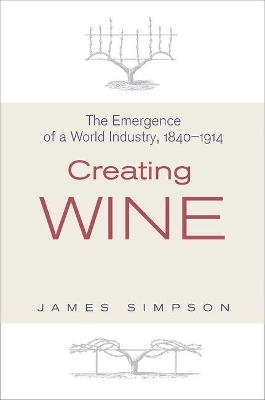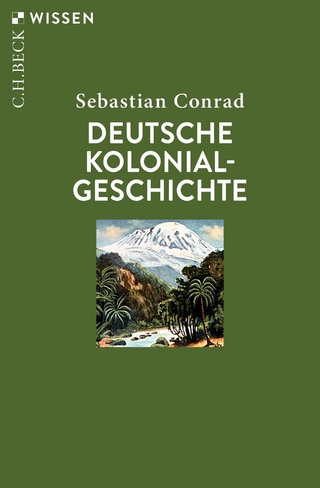
Creating Wine
Princeton University Press (Verlag)
978-0-691-13603-5 (ISBN)
Today's wine industry is characterized by regional differences not only in the wines themselves but also in the business models by which these wines are produced, marketed, and distributed. In Old World countries such as France, Spain, and Italy, small family vineyards and cooperative wineries abound. In New World regions like the United States and Australia, the industry is dominated by a handful of very large producers. This is the first book to trace the economic and historical forces that gave rise to very distinctive regional approaches to creating wine. James Simpson shows how the wine industry was transformed in the decades leading up to the First World War. Population growth, rising wages, and the railways all contributed to soaring European consumption even as many vineyards were decimated by the vine disease phylloxera. At the same time, new technologies led to a major shift in production away from Europe's traditional winemaking regions. Small family producers in Europe developed institutions such as regional appellations and cooperatives to protect their commercial interests as large integrated companies built new markets in America and elsewhere.
Simpson examines how Old and New World producers employed diverging strategies to adapt to the changing global wine industry. Creating Wine includes chapters on Europe's cheap commodity wine industry; the markets for sherry, port, claret, and champagne; and the new wine industries in California, Australia, and Argentina.
James Simpson is professor of economic history and institutions at the Carlos III University of Madrid. He is the author of "Spanish Agriculture: The Long Siesta, 1765-1965".
List of Illustrations xi List of Tables xiii Acknowledgments xv Maps xvii Introduction xxxi Weights, Measures, and Currencies xxxix Acronyms and Abbreviations xli Part I: Technological and Organizational Change in Europe,1840-1914 1 Chapter 1: European Wine on the Eve of the Railways 3 What Is Wine? 3 Family Producers 7 The Production of Grapes prior to Phylloxera 11 Traditional Wine-Making Technologies 17 Markets, Institutions, and Wine Consumption 21 The Development of Fine Export Wines 24 Chapter 2: Phylloxera and the Development of Scientific Viti-Viniculture 30 The Growth in Wine Consumption in Producer Countries 31 Phylloxera and the Destruction of Europe's Vines 34 Phylloxera and the International Response in Spain and Italy 41 Wine Making, Economies of Scale and the Spread of Viticulture to Hot Climates 48 La Viticulture Industrielle and Vertical Integration: Wine Production in the Midi 53 Chapter 3: Surviving Success in the Midi: Growers, Merchants, and the State 58 Phylloxera and Wine Adulteration 59 Politics, Phylloxera, and the Vineyard during France's Third Republic 63 The Midi: From Shortage to Overproduction 65 From Informal to Formal Cooperation: La Cave Cooperative Vinicole 71 Part II: The Causes of Export Failure 77 Chapter 4: Selling to Reluctant Drinkers: The British Market and the International Wine Trade 81 The Political Economy of the Wine Trade in Britain prior to 1860 83 Gladstone and the Rise and Decline in Consumption in the Late Nineteenth Century 87 The Retail Market and Product Adulteration 92 Who Controls the Chain? Experiments at "Buyer-Led" Commodity Chains 98 Part III: Institutional Innovation: Regional Appellations 107 Chapter 5: Bordeaux 111 Claret, Trade, and the Organization of Production 112 The 1855 Classification and the Branding of Claret 115 Supply Volatility, Vine Disease, and the Decline in Reputation of Fine Claret 120 Response to Overproduction: A Regional Appellation 126 Chapter 6: Champagne 132 The Myth of Dom Perignon and the Development of Champagne 134 Economies of Scale, Brands, and Marketing 138 The Response to Phylloxera 141 Organization of a Regional Appellation 145 Chapter 7: Port 154 Port and the British Market 155 Product Development and the Demands of a Mass Market 159 Rent Seeking, Fraud, and Regional Appellations 164 Chapter 8: From Sherry to Spanish White 171 The Organization of Wine Production in Jerez 172 Sherry and the British Market 178 Product Innovation and Cost Control 183 Wine Quality and the Demand for a Regional Appellation 187 Part IV: The Great Divergence: The Growth of Industrial Wine Production in the New World 191 Chapter 9: Big Business and American Wine: The California Wine Association 195 Creating Vineyards and Wineries in a Labor-Scarce Economy 197 Production Instability and the Creation of the California Wine Association 204 The California Wine Association and the Market for California's Wines 209 Chapter 10: Australia: The Tyranny of Distance and Domestic Beer Drinkers 220 Learning Grape Growing and Wine Making 221 Organization of Wine Production 225 In Search of Markets 230 Chapter 11: Argentina: New World Producers and Old World Consumers 240 Establishing the Industry 242 Redefining the Industry 248 The Limits to Growth and the Return to Crisis 256 Conclusion 263 Old World Producers and Consumers 263 New World Producers and Consumers 267 The Wine Industry in the Twentieth Century 270 Appendix 1: Vineyards and Wineries 273 A.1. Area of Vines and Output per Winery in France, 1924 and 1934 274 A.2 Number of Growers and Area of Vines by County, California, 1891 276 A.3. Winery Size in the Midi and Algeria, 1903 278 Appendix 2: Wine Prices 279 A.4. Farm and Paris Wine Prices, July 1910 279 A.5. Price List, Berry Brothers, London, 1909 281 Glossary 291 Bibliography 293 Index 313
| Erscheint lt. Verlag | 16.10.2011 |
|---|---|
| Reihe/Serie | The Princeton Economic History of the Western World |
| Zusatzinfo | 13 Maps |
| Verlagsort | New Jersey |
| Sprache | englisch |
| Maße | 152 x 235 mm |
| Gewicht | 595 g |
| Themenwelt | Geschichte ► Teilgebiete der Geschichte ► Wirtschaftsgeschichte |
| Technik ► Lebensmitteltechnologie | |
| Weitere Fachgebiete ► Land- / Forstwirtschaft / Fischerei | |
| ISBN-10 | 0-691-13603-3 / 0691136033 |
| ISBN-13 | 978-0-691-13603-5 / 9780691136035 |
| Zustand | Neuware |
| Haben Sie eine Frage zum Produkt? |
aus dem Bereich


